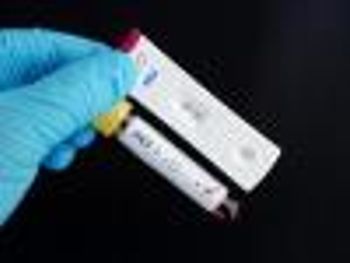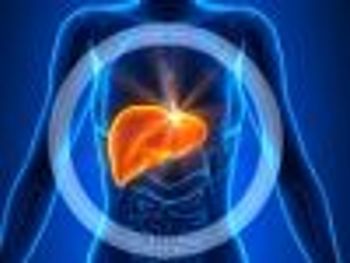
Community-acquired pneumonia is a major cause of mortality and morbidity among patients with HIV.

Community-acquired pneumonia is a major cause of mortality and morbidity among patients with HIV.

A substantial portion of mortality from liver cirrhosis and hepatocellular carcinoma can be attributed to the extrahepatic manifestations associated with hepatitis C virus.

Making the patients’ lives easier is at the heart of my job.

Study finds that treating hepatitis C reduced the risk of developing the signs and symptoms of Parkinson disease.

Researches seeking to eliminate HIV are close enough to see the finish line, but with no idea how far away they are from a cure.

Here are the top articles from our hepatitis coverage of the year.

Top news of the day across the health care landscape.

Foreign-born black women aren’t benefiting from HIV prevention programs at the same rates as other women.

Study highlights the importance of testing and early intervention in young patients with hepatitis C virus.

A recent study found further evidence that hepatitis C reinfection rates are greater in drug users despite successful treatment with direct-acting antiviral therapy.

Emerging platforms make it feasible for hepatitis C testing to be conducted in settings that within or outside of health care facilities, such as prisons.

Study shows that routinely screening inmates for hepatitis C virus at entry may identify a significant number of cases that would have been missed through targeted testing.

Bodily fluids may serve as vectors for transmission for transmitting hepatitis C virus RNA in patients with a high viral load.

HIV is not associated with preterm delivery, though antiretroviral therapy is, but hepatitis C may be a potential risk factor.

Detecting hepatitis C RNA in peripheral blood mononuclear cells or liver cells in patients who are negative for viral RNA raises questions about the risk of transmission to other individuals.

Early detection is vital to more patients with hepatitis C virus being eligible for increasingly efficient direct-acting antiviral treatment options.

Tailoring hepatitis C treatments to shorten regimen length can reduce costs and ease burden for patients with limited insurance benefits.

Direct-acting antivirals are a costly but highly-effective class of drugs for the treatment of hepatitis C that can cure most cases.

One hundred percent of patients with hepatitis C virus genotypes 1, 2, 4, 5 and 6 achieved a sustained virologic response at 12 weeks post treatment with 8 weeks of glecaprevir/pibrentasvir treatment.

Sofosbuvir, velpatasvir, and voxilaprevir successful in patients with hepatitis C virus infection, with and without HIV co-infection, including those with prior noncompletion of treatment or poor adherence to direct-acting antiviral drug regimens.

The epidemiology of hepatitis A has shifted from point-source outbreaks to outbreaks caused by person-to-person transmission.

People who inject drugs may still able to achieve a cure of hepatitis C virus infection with treatment with direct-acting antivirals.

Interferon lambda 4 represents a vulnerability that benefits hepatitis C virus to the detriment of humans.

Treatment regimens consisting of daclatasvir plus sofosbuvir plus ribavirin and velpatasvir/sofosbuvir plus ribavirin show similar cure rates in patients with hepatitis C virus genotype 2 and 3.

Targeting interleukin (IL)-17A and IL-22 proteins may help delay the development of hepatic fibrosis.